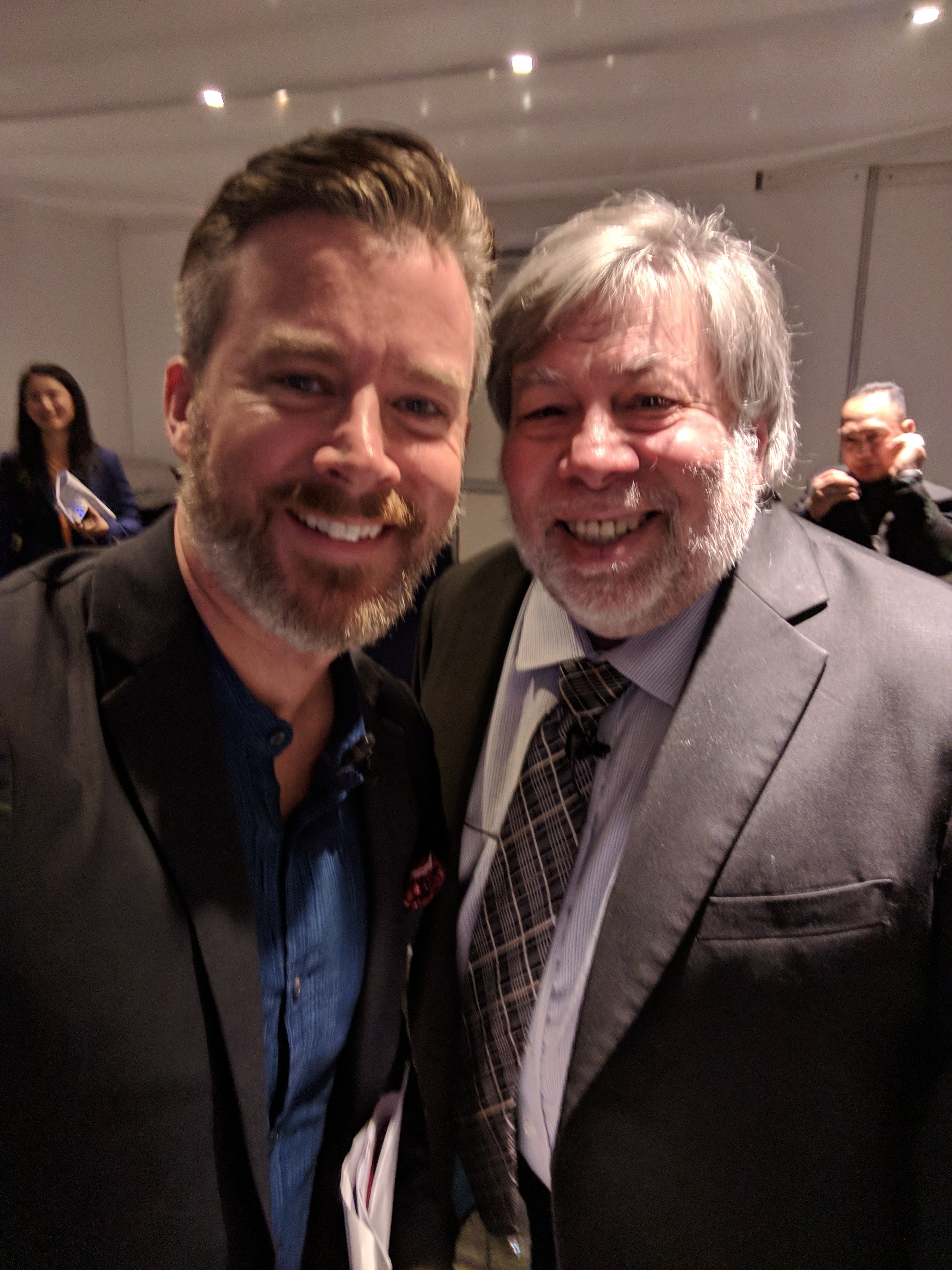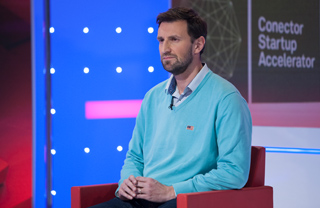
Daniel Sieberg: From Marketing Lead at Google to Co-Founder of Media Startup
Daniel Sieberg’s life is full of great achievements. An Emmy-winning correspondent working with first-tier media went on to lead the marketing department at Google News Lab. Now, Daniel is starting a new period at Civil, a cutting-edge organization aiming to merge journalism and blockchain technology.
Daniel agreed to share his extensive experience with us. Learn how to take the best of both worlds and succeed in seemingly opposing fields.
Contents
Could you tell about your professional background? What was your role at Google and Civil, one of the innovative blockchain startups?
I’ve always worked at the intersection of journalism and technology going back to the late 1990s when I was a business-technology reporter for the Vancouver Sun. I’ve also worked as a technology correspondent for the likes of CNN, CBS News and ABC News over the course of nearly 15 years and joined Google in 2011.
I created one of the first teams to support the editorial efforts of newsrooms – Google for Media – and later joined forces with other colleagues to help find the Google News Lab. Today, it is a global effort to collaborate with journalists and entrepreneurs to build the future of media. I no longer work for Google having just left a few weeks ago to join Civil and its efforts to merge news and blockchain technology.
What projects did you work on at Google?
I was mainly focused on those two teams – Google for Media and the Google News Lab – but within those, I had the opportunity to participate in a number of projects, including our first launch of training resources for journalists in Africa. Our initial partnerships work in Europe and help forge relationships with key organizations in the US like the Online News Association (ONA), Society of Professional Journalists (SPJ), and others. I got a chance to travel to more than 20 countries to hear what journalists need in today’s digital transformation and help assess the best ways for Google to support them.
 Daniel Sieberg is interviewing Apple co-founder Steve Wozniak at the World Islamic Economic Forum
Daniel Sieberg is interviewing Apple co-founder Steve Wozniak at the World Islamic Economic Forum
You have an extensive background in media and journalism. What made you shift to the corporate sector?
I’d always known people working at Google and when I heard about the potential to work there in 2011 I got very excited. It was a relatively new territory to carve out the team that grew to Google for Media and the Google News Lab but it was also incredibly inspiring to see all the great work being done across the company for news. I spent six years at Google and learned so much from my colleagues and peers. It was a chance to work for a major global company and create as much opportunity for impact as possible.
How were media and technology connected at the Google News Lab? Was it a non-profit project?
It wasn’t a non-profit project but rather a team within Google that focused on that intersection of news, storytelling, and technology (e.g. separate from the revenue teams, ad sales, technical support, etc.).
What were you trying to achieve at the Google News Lab?
Our goal was to demonstrate Google’s commitment to the editorial side of newsrooms and foster innovation at all levels of newsroom production. Over the course of a few years, the team grew from just a handful of us to having leads in multiple markets in Europe, Asia, and South America. I’m really excited about the work being done and look forward to seeing where it all leads as an outsider and googler.
Where is the intersection of marketing and journalism? Did you aim to provide quality information to users or promote Google products?
We wanted to ensure journalists could take full advantage of Google tools – everything from maps to search to trends data and more. We conducted hundreds of in-person training for journalists and created a self-guided learning portal.
We also wanted to illustrate the power of Google trends data in helping inform and guide stories. So we built out that effort under our data editor, Simon Rogers who now leads a global team to work with newsrooms all over the world.
Besides, we wanted to broker partnerships with organizations that are committed to helping journalists succeed in this digital era and provide whatever resources we could. There’s really not an “end goal” per se but more about continuing to support newsrooms everywhere the best way possible.
Can startups create objective marketing content or is it inherently biased?
In my opinion, if you believe strongly in the product or service or company you represent, then marketing can be objective. But of course, we all carry an inherent bias and certainly need to be aware of that whenever creating marketing campaigns or collateral.
Can corporate blogs or pages on social media become the new media of tomorrow? What do companies need to change their approach to content in this case?
It’s possible for corporations to use those platforms for authentic and genuine marketing opportunities but it’s also up to the readers to take that content with a grain of salt and ensure they know when it’s sponsored content or not. Starting with the audience and putting them first is critical to creating something meaningful rather than just thinking about what’s timely or important to the company.
How can aspiring startups find ways to be featured in the media? How can they approach journalists with their innovative ideas?
It’s tough to break through the noise but I recommend spending time at events (even if you aren’t officially presenting), reading about what reporters are covering or interested in through their social media channels and not being afraid to reach out to them. But you need a refined elevator pitch, a clear ask, and a thick skin.
Being an insider in the innovative media startup, could you tell us about the main issues businesses face today? How can they overcome those?
Businesses face many issues with marketing and there’s a lot that could be done. My biggest piece of advice is to be authentic and real. People are savvy today when it comes to seeing through marketing campaigns that don’t have a real sense of purpose and connection with the audience. Marketers should be storytellers – and the best stories use people and their experiences to convey the value of any product. Let their voices be the star.
Could you tell us about Civil? How does this media startup work and what’s new about it?
Civil is a new platform built on the basis of blockchain technology. It helps to provide better security of the network as well as promote content creation directly for the audience.
At a high level, blockchain is essentially about liberating data from a central, consolidated server and enabling secure, reliable peer-to-peer transactions that improve efficiency while reducing costs for all parties. This is the decentralization concept in a nutshell. While Bitcoin is the most well-known application of blockchain to date, it’s just the tip of the iceberg. Blockchain can, will and already does enable far more than just cryptocurrencies and it’s approaching the stage of mass awareness and growing adoption, much like the internet in the early 1990s.
Think of it as an unchangeable, secure network of decentralized computers that can facilitate countless types of transactions. It’s a new platform with blockchain underpinnings – but for consumers, the content will still be consumed on the mobile web or an app.
Journalism will be one of the first, truly consumer-facing applications of blockchain technology. Civil’s model will introduce the power of blockchain technology to a much broader, the consumer-centric audience – marking one of (if not the) first consumer-focused applications of the blockchain.
How can such blockchain startups change the way journalism works? Can they benefit the entire ecosystem?
It is advertiser-driven interests and the business-focused decisions of publishers/other third-parties that have driven journalism to its current, dire state – and blockchain offers the potential for a new model that takes those actors out of the picture.
There is also immutability of the blockchain records that promise a permanent archive of content coupled with the opportunity to create a robust marketplace of journalism through crypto-currency that hasn’t explored before. There are of course many challenges ahead but we’re excited to take the initial steps forward for journalism. But we can’t do it alone and encourage interested parties to reach out and see how they might be involved (write me to learn more at daniel@joincivil.com).
Do you think that newsmaking blockchain startups will compete with traditional news sources? Or is it the beginning of the end for the latter?
The blockchain is still an experimental platform for many sectors – from healthcare to voting records to financial transactions – but we hope the depth and breadth of what’s been demonstrated globally with blockchain broadly will help people both understand the potential and demonstrate trust in the technology.
But of course we understand it’s new and confusing to some and we want to be as transparent with our process and philosophy as possible and be fully collaborative with the industry. We see many ways to work with both newer, startup newsrooms as well as legacy ones around the world.
What has Civil already achieved? How does this media startup impacts the industry?
Civil has already generated impressive momentum with journalists and citizens alike:
- We’ve got an active Slack channel with hundreds of engaged users from around the world (“amazing interest from journalists in Mexico City after the earthquake, for instance…”).
- We’ve also officially signed more than a dozen journalists from the likes of New Yorker, LA Times and Politico as part of our initial roster of journalists. We will be announcing several additional newsrooms in the coming weeks (for more, including a chance to create a newsroom for Civil, check out joincivil.com).
- We have a partnership with ConsenSys (a development and investment arm of Ethereum, the second-largest crypto-currency and a system that offers the creation of more than just crypto-currency) and that backing gives us a solid foundation while ensuring Civil is committed to the long term. Our focus is on building a quality product, not watching token price fluctuations.
To that end, Civil will run a token economy with a token launch that will come in early 2018:
- Civil’s focus is on developing a quality product and experience for citizens and journalists/newsmakers alike. We’re not going to be a flash in the pan, and we believe strongly in having a substantive product available when we issue a token sale.
- Our efforts in the meantime are focused on building out the platform, recruiting/onboarding more journalists in a multitude of markets and building out our community of engaged citizens that want to see more / better local, policy and investigative-focused reporting.
- And, yes, we want journalists to get paid well for quality, impactful journalism.
How do you choose which topics to cover? Is the approach similar to a lean startup where public feedback always comes first?
To be clear, Civil isn’t doing the reporting as we’re the platform for others to do their reporting. We’re focused mainly on newsrooms that have an interest in local, investigative and policy content but there will be ways that people who use Civil can help guide or “sponsor” coverage that they think is important to their neighborhood or society using their Civil tokens on the platform. People can allocate their tokens towards issues that matter to them and rally others to do the same.
We’ve seen design thinking for startups among your topics of interest. What is it all about?
Design thinking is primarily about putting your audience first and creating anything new with a user-centric approach. There’s an entire ethos that involves a structured brainstorm to help channel people’s ideas into prototypes and something tangible. Ideally, it also brings together people from across the enterprise – eng, marketing, legal, finance, etc. – depending on the project to get a diverse viewpoint on what works best.
What are the main benefits of design thinking for startups?
One of the main goals of design thinking is to fail fast and isolate the best way forward in a condensed period of time. Teams will often create a design sprint, which takes place over 3-5 days of ideating, strategizing and prototyping to get to a product or service approach that works best for users. It can be extremely helpful for startups to create this kind of opportunity and involve the right people across the team. If folks also want to search for their own ways to do it – bringing in a third-party facilitator is usually the best way to go.
What is the role of a customer in a lean startup?
The customer’s needs should be put first throughout the process – sometimes teams will even bring in a few users for some of the process (or at least interview them at some point) and really channel their feedback into everything throughout the experience.
How can marketers in a lean startup apply the design thinking approach?
Marketers could use design thinking sprints to narrow their focus and create some structure around a campaign. Too many ideas can lead people to be somewhat scattered or overwhelmed so these design thinking sprints give a framework while still providing a chance to experiment and iterate.
Should marketers collaborate closely with UX designers when trying to bring a product to the market?
Yes and yes! Whenever possible it’s worth marketers talking to UX designers and bridging that gap. Both bring strengths to the table and UX designers can definitely aid in the prototyping phase as well. The best design thinking experiences bring marketers and UX designers together to help tell a story that really resonates with users.




Thank you very much for sharing, I learned a lot from your article. Very cool.
Your article helped me a lot. Thanks!
Your point of view caught my eye and was very interesting. Thanks.